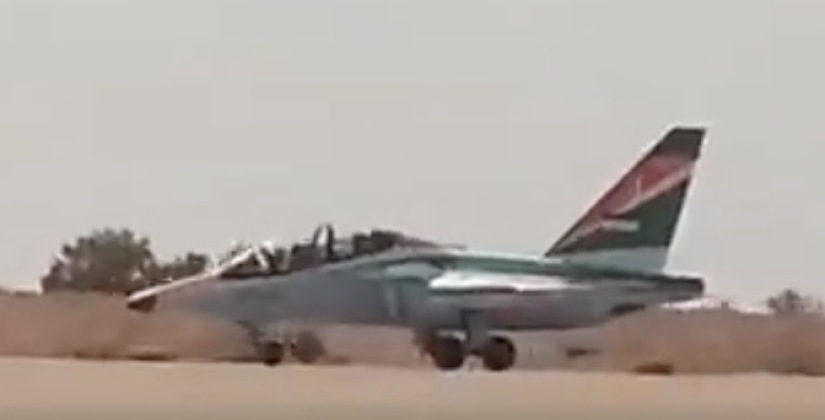News
Iran Receives First New Russian Fighters Since 1990s: Do Yak-130 Jets Herald the Coming of Su-35s?
The Iranian Air Force has received its first batch of Russian fighter aircraft since the 1990s, with its first two Yak-130 fighter-trainers reportedly delivered on September 1. The aircraft were shown the following day taxing at the 8th Tactical Air Force Base outside Isfahan in central Iran. The fighters’ delivery follows a series of reports over the past year that Iran has placed orders for new combat aircraft from Russian – namely Su-35 fighter aircraft of which over 60 are reportedly being considered for induction into service. Deliveries of the Yak-130 provide an indication that a contract for Su-35s may have indeed been signed, since the Yak aircraft was designed as a twin seater optimised to preparing pilots for operations in advanced ‘4+ generation’ or fifth generation aircraft. The Yak-130 would otherwise have little place in the Iranian Air Force’s current force structure. Personnel from Iran reportedly began training for Su-35 operations in 2022, at a time when Moscow sought to strengthen its strategic partnership with Iran and possibly offset some of the costs of imported Iranian drones with exports of its own military hardware. Iranian official sources in February published footage of a new very heavily fortified airbase named Eagle 44 which is expected to host the first Su-35s delivered.

The Yak-130 is the first Russian fighter class which Iran has received since deliveries of MiG-29 and Su-24M fourth generation jets concluded in the 1990s to fulfil Soviet era contracts. The disintegration of the USSR left post-Soviet Russia far more responsive to Western pressure to block arms sales to Iran, even at times when its defence sector was struggling to survive due to lack of orders, which effectively ended Iranian ambitions to rebuild its fighter fleet using Soviet and Russian combat jets such as MiG-29s. The Yak-130 retains a formidable combat capability alongside its role as a trainer, and with the large majority of Iranian fighters being obsolete Vietnam War era third generation jets the new aircraft is one of the most capable and by far the most sophisticated, in service. Although suffering from a low climb rate, mediocre manoeuvrability, a low operational altitude and a subsonic maximum speed, the aircraft’s avionics, sensors and access to a range of advanced munitions partly compensate for this, with its maximum payload standing at a formidable 3000kg. It can deploy a range of guided munitions as well as electronic warfare pods, although it lacks compatibility with advanced air to air munitions which trainers from mainland China, South Korea and Taiwan notably benefit from.

Iran has notably developed multiple indigenous trainer aircraft, the most notable of which has been the Kowsar fighter-trainer unveiled in November 2018 which was closely based on the airframe of the American F-5. While Iran’s defence sector is not expected to be able to produce competitive fighters even in the lighter ranges, the fact that it has turned to Russia even for trainer aircraft has been interpreted by some analysts as a poor reflection of the capabilities of its domestic manned aviation sector. A counterargument to this has been that the Yak-130 is best optimised to training for the Su-35, which Tehran reportedly seeks to operationalise as soon as possible, and that acquiring the Yak-130 provides the fastest means of achieving this. Modifications to domestic trainers to simulate the Su-35’s capabilities would likely be far more time consuming and less effective particularly in the short term.












